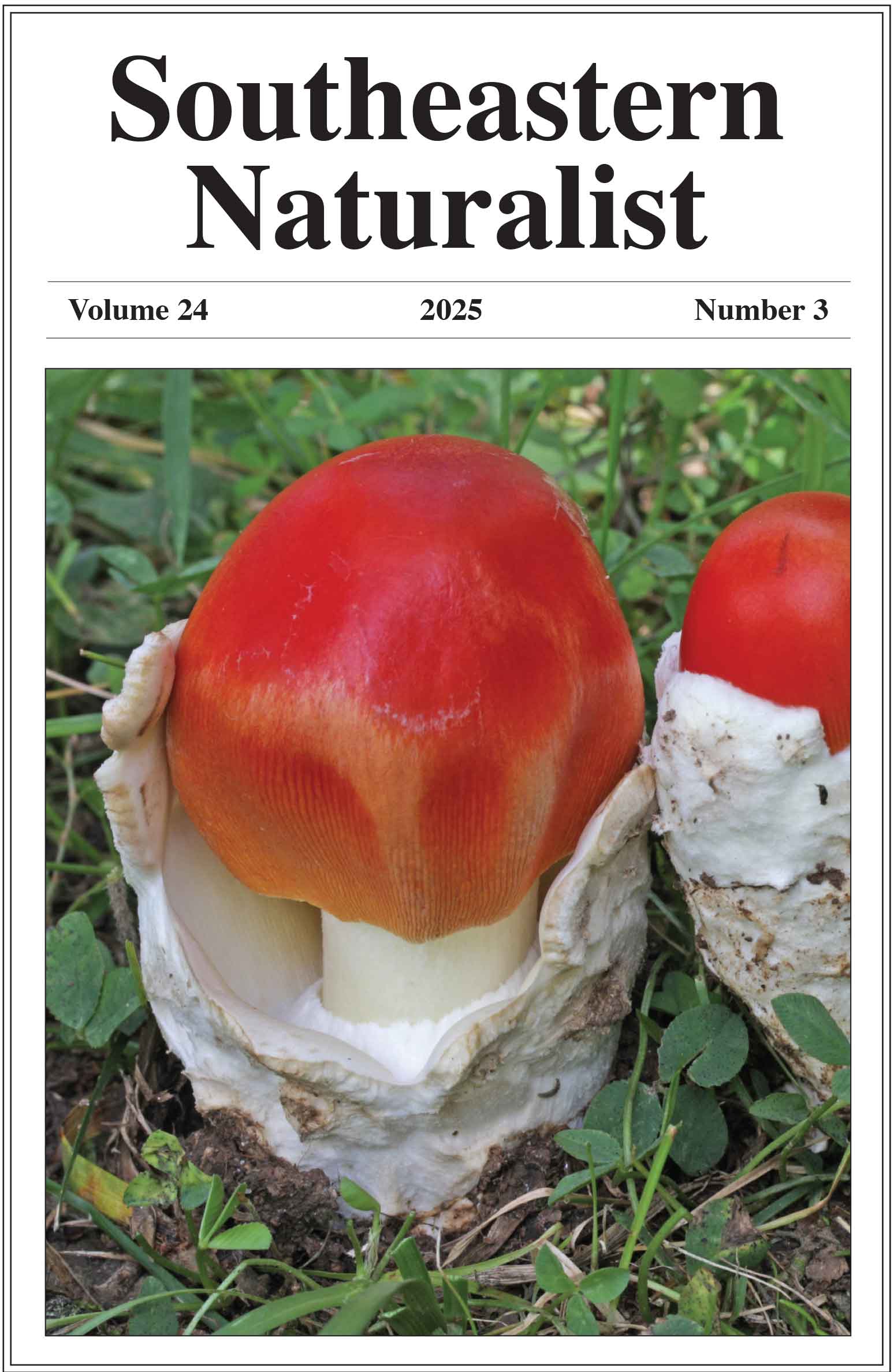The Influence of Urbanization on Bat Species Composition and Activity in Baton Rouge, Louisiana
Jane M. Kunberger1,*, Emily L. Munch1, Naya M. Black1, Samantha Pettibone1, and Ashley M. Long1
1Agricultural Center and School of Renewable Natural Resources, Louisiana State University, Baton Rouge, LA 70803. *Corresponding author.
Southeastern Naturalist, Volume 23, Issue 3 (2024): 339–350
First published early online: 3 August 2024
Abstract
Urbanization has negatively affected biodiversity worldwide, but bat responses to urbanization vary by region and species. We used passive acoustic monitors to examine bat species composition and activity from December 2020 to February 2021 (winter) and July–September 2021 (summer) at urban, greenspace, and rural sites in and adjacent to Baton Rouge, LA. We detected a similar number of species during both seasons, but bat activity was greater in summer compared to winter. We detected a similar number of species across sites during summer, but in winter, we detected more species at greenspace sites compared to urban and rural sites. Tadarida brasiliensis (Mexican Free-tailed Bat) was the most common species we detected during our study and was most active at greenspace sites during winter and urban sites during summer. The other species we detected were generally more active at greenspace sites compared to urban and rural sites during both seasons.
![]() Download Full-text pdf (Accessible only to subscribers. To subscribe click here.)
Download Full-text pdf (Accessible only to subscribers. To subscribe click here.)
Access Journal Content
Open access browsing of table of contents and abstract pages. Full text pdfs available for download for subscribers.
Issue-in-Progress: Vol. 24( 4) ... early view
Check out SENA's latest Monograph and current Special Issue in progress:













 The Southeastern Naturalist is a peer-reviewed journal that covers all aspects of natural history within the southeastern United States. We welcome research articles, summary review papers, and observational notes.
The Southeastern Naturalist is a peer-reviewed journal that covers all aspects of natural history within the southeastern United States. We welcome research articles, summary review papers, and observational notes.